Hertzian Rain is a variable event structure designed to raise awareness of issues surrounding the wireless topography of urban environments through telematic conversations based on sound and bodily movement.
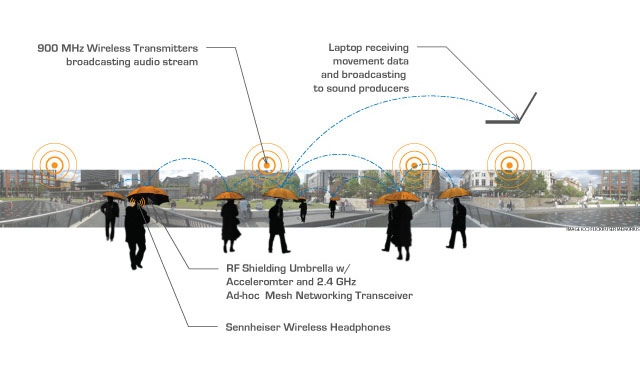
As with other aspects of the physical world such as land, water and air, the electromagnetic spectrum is a limited resource. Hardin’s Tragedy of the Commons (1968) illustrates the dilemma in which multiple individuals acting independently in her/his own self-interest can ultimately destroy a shared resource even when everyone knows this is in no one’s long-term interest. Hertzian Rain addresses this competition for signal dominance through a participatory scenario for real-time, asymmetrical communication between sound makers (sound artists, DJs, spoken word performers) and sound listeners (an audience) – or hybrids thereof.
PERFORMANCES
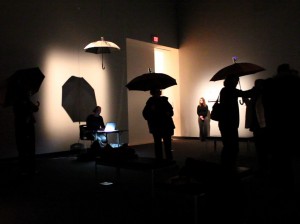
February 13, March 27, April 8 & 10, 2011
Birchfield Penney Art Center, Buffalo, NY
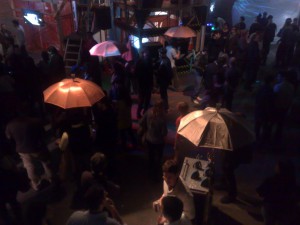
March 6 – 7, 2009
Eyebeam, 540 W. 21st, NYC
SCENARIO
Live sound from multiple sound makers is streamed from a set of wireless transmitters placed at opposing sides of an urban space. These transmitters broadcast these audio streams locally on the same radio frequency to a group of participants wearing wireless headphones tuned to this frequency. Because the transmitters broadcast on the same local frequency, a zone of interference is created where multiple audio streams compete for signal dominance.
Participants carry umbrellas made of electromagnetic field (EMF) shielding fabric that enable them to actively shape the surrounding environment of radio waves. By orienting the umbrella in different ways, one is able to filter the interfering radio signals and select a single audio stream to listen to.
The movements of the crowd are sensed by accelerometers attached to the umbrellas and this data is broadcast locally to the sound makers via an ad-hoc wireless network, who in turn use these data streams to modify the sound streams. The resultant feedback loop provides for a form of indirect communication, where the sound producers influence bodily movement of the crowd that in turn influences the sounds the producers make.
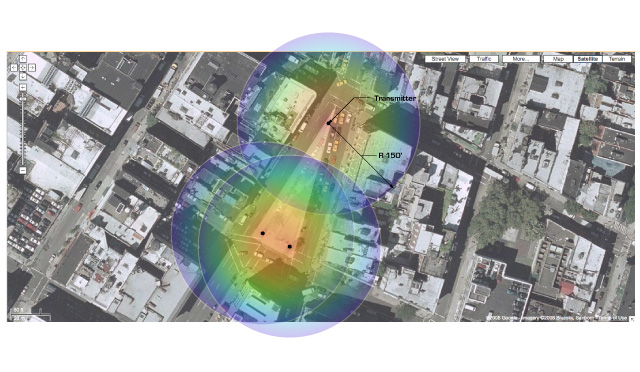
VARIATIONS
The project is by design variable and underspecified. It is designed for multiple, iterative performances and is open to different configurations.
The type and number of audio streams and the locations from which they originate is variable. Sound sources might include real-time ambient sounds produced by a sound artist, a spoken word performance delivered from the middle of the square, or live music from a local or remote location mixed in real-time by mobile DJ, for example.
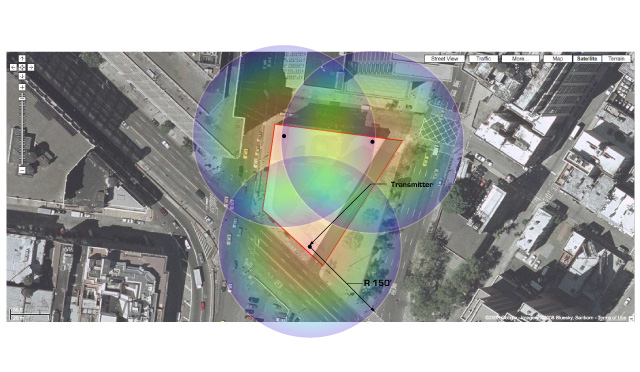
MOTIVATIONS
For some time I have been interested in the so-called Hertzian space (Dunne and Raby, 2001) of cities. Specifically, I have been thinking through some of the implications of British architect Peter Cook’s observation:
When it is raining in Oxford Street the architecture is no more important than the rain, in fact the weather has probably more to do with the pulsation of the Living City at that given moment.
On any given day, we pass through transportation systems using magnetic stripe or Radio Frequency ID (RFID) tags to pay a fare, coordinate meeting times and places through SMS text messaging over wireless cellular networks, cluster in cafes and parks where WiFi is free, move in and out of spaces blanketed by wireless CCTV surveillance cameras, and curse our wireless provider when their cell towers aren’t in reliable range of our place of residence. Hertzian space is all around us, coming in waves of various frequencies, lengths and intervals, embedded within the course of our everyday lives in manifold ways.
The Hertzian space of cities, once the territory of governmental agencies, private enterprise, and networks of ham radio operators, has evolved into a dynamic and contested site where many competing interests are beginning to shape a new information overlay. Today, as the dataclouds of the 21st century descend on the streets, sidewalks and squares of contemporary cities, we might ask: to what extent are these Hertzian weather systems becoming as important, possibly more important, than built form in shaping our experience of the city?
I’m interested in how these dataclouds shape how we move through and interact within urban space, particularly in relation to conditions of interference, interruption and drop-out of wireless signals. Given these conditions, how might we begin to think about how we can shape these environments? How are they (already) shaping us?
CREDITS:
Mark Shepard – concept, design, programming, electronics
Nick Bruscia – lead super-fantastic plastic fabricator
Heamchand Subryan – master seam-master